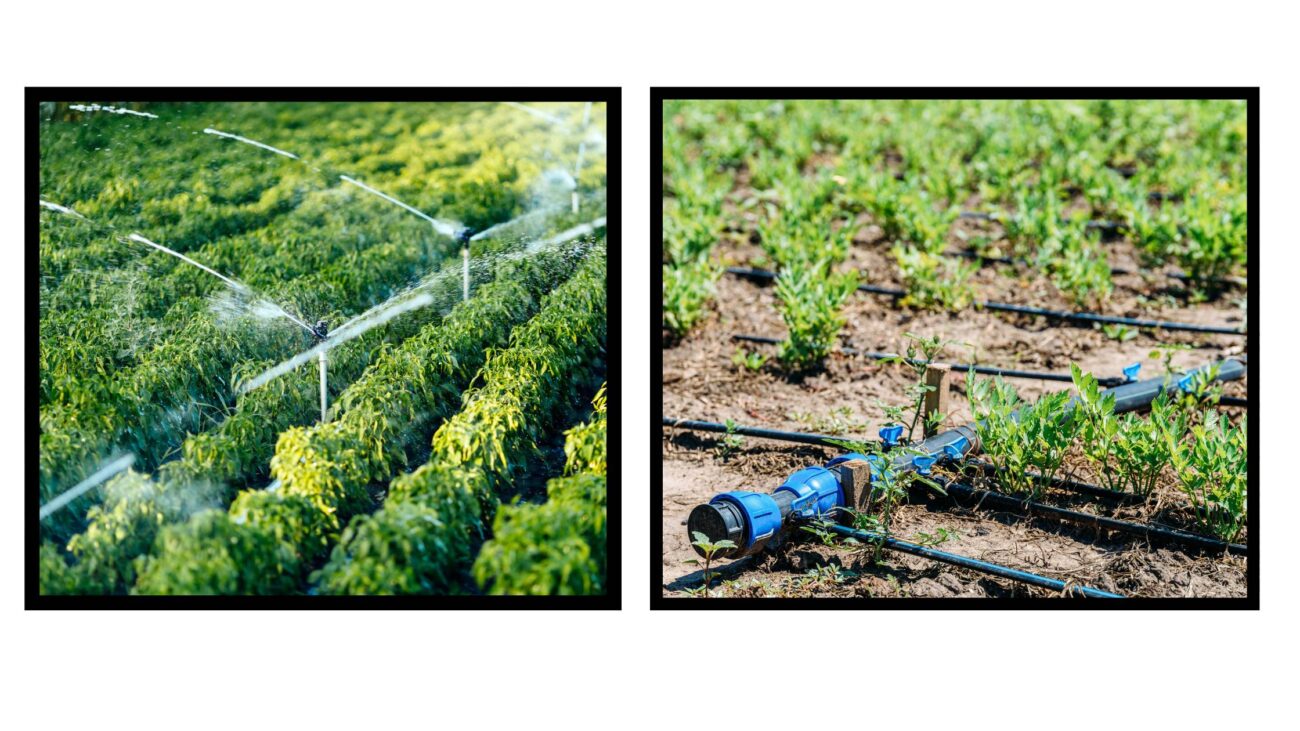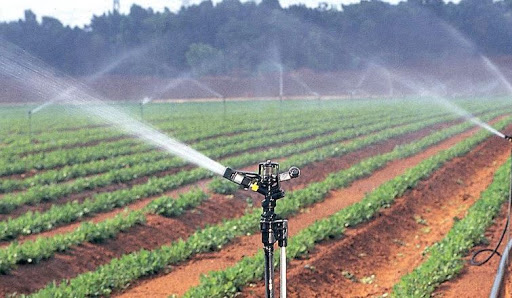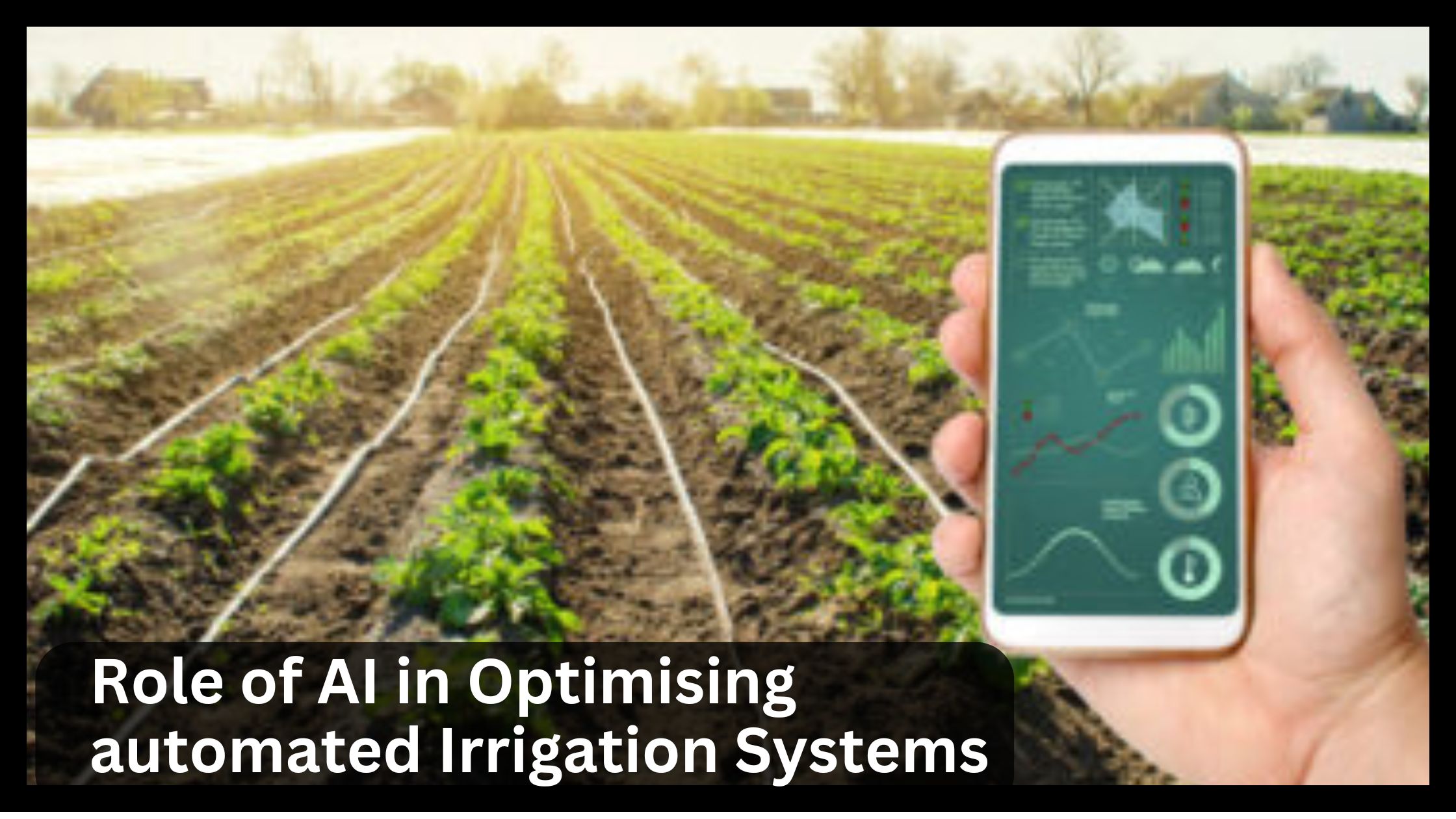India’s economy is largely reliant on agriculture, offering livelihood to hundreds of millions of people. Nevertheless, traditional methods of cultivation pose various obstacles, including a lack of water. With an increasing need for food supplies, efficient water usage assumes vital importance. This is why combining artificial intelligence with cloud-based automated irrigation systems is seen as a leading solution to tackle the problem.

In India, Artificial Intelligence assumes a pivotal position in changing and optimising automated irrigation. It addresses water scarcity and recuperates agricultural sustainability.
Now let’s describe “The Role of Artificial Intelligence in Optimising Automated Irrigation Systems in India 2024”
1. Challenges in Traditional Irrigation Systems:
According to H. Sudheer Chitthi et al., traditional irrigation practices rely on manual human effort with ancient techniques, which are inefficient with water consumption and labor utilization. Moreover, the climatic change makes it impossible for farmers to cultivate and use water appropriately. Therefore, the irrigation with a high level of accuracy and precision is needed for farmers to implement.
2. Introduction of Automated Irrigation Systems:
Though automated irrigation is highly successful and durable in contemporary agricultural production. But it can reach its full capacity through utilization of artificial intelligence technology. Consequently the artificial intelligence should come in to play for decision making on automated irrigation so that water is used optimally based on real time data and environmental factors.
3. Artificial Intelligence-Powered Sensors and Data Analytics:
Sensor driven data: Artificial intelligence driven sensors regularly collect data on soil moisture, weather, crop health etc. in real-time. This data generated by this sensor is fed to Artificial Intelligence through which Artificial Intelligence is made to take intelligent decisions on how much water for irrigation is needed at when. As a result, the water wastages are minimized, and crops get maximum water which is more than the inefficacy in the traditional methods.
4. Machine Learning for Predictive Analysis:
Predictive analysis on irrigation systems is highly dependent on machine learning, which is part of the AI. A program that uses historical data can predict what weather and crops will be like in the future using a computer algorithm. With this, when it comes to water scarcity, timing of irrigation can be optimized according to changing weather patterns so as to minimize on its negative impacts.
5. Remote Monitoring and Control:
Artificial Intelligence in automated irrigation systems is the possibility to monitor and control the entire irrigation process remotely. Farmers can use mobile applications or web platforms to access real-time data and control irrigation systems. Such remote connectivity allows farmers to make alterations from anywhere, which reduces the amounts of time and resources spent on monitoring the process while enhancing the general process efficiency.
6. Customisation and Adaptability:
Because the type of irrigation runs through Artificial Intelligence, it makes it highly customisable. This allows farmers to use existing technologies according to the needs of their plants. For example, different plants need different amounts of water at different stages in their life cycle. Artificial Intelligence can set up algorithms that are aware of the needs for each plant. In the end, no drop of water goes to waste since it all goes into plants that need them to grow. This enhances water use as well as conserves it.
7. Energy Efficiency and Cost Savings:
The procedure of Artificial Intelligence Optimization contributes to reduction in water as well as energy that allows savings. By using less water, AI ensures energy used for pumping is not wasted. As a result, the cost of water resources decreases since farmers need less with improved efficiency and crop productivity, too.

8. Challenges and Considerations:
While the benefits of Artificial Intelligence in assimilated irrigation systems are abundant, adoption barriers remain. The pricing of groundwork, the requirement for technical skills, and the availability, as well as the price of dependable internet access, can limit the access of this technology, particularly among small and poor farmers. These problems must be fully addressed to ensure that farmers from all sections of society gain from Artificial Intelligence in irrigation.
9. Government Initiatives and Support:
To encourage the application of AI in Agro-based activities, realizing potential benefits of AT in agribusiness, government of India has supported programs. Use grants, training or other indirect aids to make new irrigation technologies affordable by farmers so that they are motivated to adopt modern ways of watering crops.
For them to become available to all farmers, including small and marginal ones that are the majority of the farming community, all the level of governments has to come on board.
10. Social and Environmental Impact:
Apart from the noted economic impact of the integration of Artificial Intelligence in the automated irrigation systems, there are also vital social and environmental factors. For instance, promoting the use of the technology alongside the current irrigation systems will significantly reduce the negative impact of the latter on the environment and society. Specifically, the AI-oriented mechanisms will minimize the wastage of water that exposes local sources to massive extraction and depletion. Simultaneously, the action ensures the constant sustainability of various ecosystems and the fauna living in it.
Furthermore, the efficiency associated with the new application of Artificial Intelligence-based irrigation mechanisms will enhance agricultural production, thus boosting the domains of food, security, and the economy.
11. Data Security and Privacy Concerns:
When integrating Artificial Intelligence into agriculture, concerns about data security and privacy must be considered to promote discussion and implementation. For example, automated irrigation systems generate extensive data, often including sensitive information regarding crop yields, schedules, and weather.
Governments and technology developers should partner to ensure that robust frameworks for data security are designed and implemented, preventing unauthorised access to farmers’ data. Farmers privacy can be respected while still using data to improve agriculture and balancing concerns.
12. Education and Training Programs:
Comprehensive education and training programs should be put in place to ensure the development and spread of Artificial Intelligence in agriculture. Farmers have to be trained to operate and maintain the Artificial Intelligence-enabled irrigation systems effectively.
Government Initiatives: Government should strive to offer affordable and accessible training to farmers through incorporating system operations, troubleshooting as well as data interpretation. By investing in education, the people at the grass root can benefit from the advantages of Artificial Intelligence technology.
13. International Collaboration:
Artificial Intelligence in agriculture carry challenges and opportunities that go beyond national boundaries. International cooperation and knowledge exchange can facilitate the quicker implementation of best practices and groundbreaking new initiatives.
Several nations have already spread Artificial Intelligence in agriculture even further, and India may benefit from their experience. Additional collaborative efforts, including co-research jobs, successful strategy information sharing, and a global Artificial Intelligence in Agriculture protocol development, can facilitate deployment.
14. Scaling Artificial Intelligence Solutions for Small Farmers:
Although large farms may have an easier time affording such technology, small and marginal farmers are likely to face problems of affordability and accessibility. Government programs and private-sector investments could seek to develop more cost-effective Artificial Intelligence solutions that are designed for small farmers.
This can be achieved through the implementation of subsidies, financial support, technology-sharing, and other incentives that would guarantee equal opportunities for farmers of all scale.
Conclusion:
To sum up, Artificial Intelligence has a transformative opportunity regarding the automated irrigation systems in India. This approach contributes not only to efficient water management but also to the creation of a new economic, social, and environmental environment that could be described as a holistic approach to sustainable agro-industry.
This Artificial Intelligenceor AI-based interventions mitigate the sector’s existing challenges, offering solutio ns that can help the farmer community to improve their productivity and conserve water in the interest of the environment.
In conclusion, as India progresses towards agriculturally self-sufficient, integration of AI in irrigation is not a technological choice: it is a strategic necessity. Artificial Intelligence accessibility, inclusivity, and the generation of Artificial Intelligence-powered solutions coordinated within a solid education framework for farmers shall determine how the country’s agriculture sector looks in the future.
FAQs for Automated Irrigation Systems in India 2024
How does Artificial Intelligence enhance water conservation in agriculture?
Answer: From soil moisture and weather conditions to real-time results, Artificial Intelligence ensures accurate irrigation and minimal water waste, making the most of every drop.
What challenges do small farmers face in adopting Artificial Intelligence for irrigation?
Answer: The critical failure of Artificial Intelligence-driven irrigation systems is the market is small farmers. The main barriers include high initial setup costs and limited technical expertise, as well as inadequate internet connectivity.
How does Artificial Intelligence contribute to environmental sustainability in farming practices?
Answer: AI can do much by producing biomass choice without over-extracting water to minimise environmental consequences and providing the farmers to make biomass choices that envelop the ability to shift to open-cycle systems, permitting them to use the parts of putrescible as input subjective to the climate to support their cultures.


Hi your comprehensive exploration of the integration of Artificial Intelligence (AI ) into automated irrigation systems in India is both timely and insightful. The structure of your article , from outlining the challenges in traditional irrigation practices to discussing the potential impact and considerations of AI implementation, provides a well – rounded understanding of this transformative technology’s role in agricultural sustainability.
Hello Renuka, Wonderful to see you liked the post and have commented on it. Please keep reading and commenting as it helps me to keep on track.
Thanks a lot
“Your detailed analysis of AI in automated irrigation is incredibly insightful. It’s inspiring to see how technology can transform agriculture and address water scarcity issues. Great work!”
Thanks for kind comment